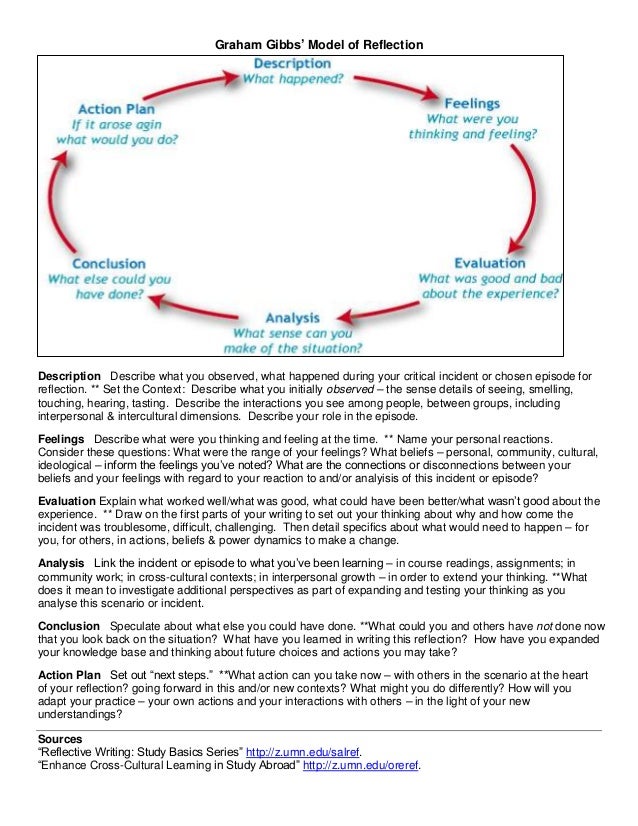
Graham Gibbs Reflection Cycle, Annotated
The Six Stages of Gibbs' Reflective Cycle This model is cyclic and has six principal elements: 1. Description In this element of the cycle, you recount what you are reflecting upon, giving a descriptive account with contextual information as appropriate.

Gibbs' Reflective Learning Cycle HELEN MARTIN BLOG
What Is Gibbs' Reflective Cycle? Professor Graham Gibbs published his Reflective Cycle in his 1988 book " Learning by Doing ." It's particularly useful for helping people learn from situations that they experience regularly, especially when these don't go well. Gibbs' cycle is shown below. Figure 1 - Gibbs' Reflective Cycle
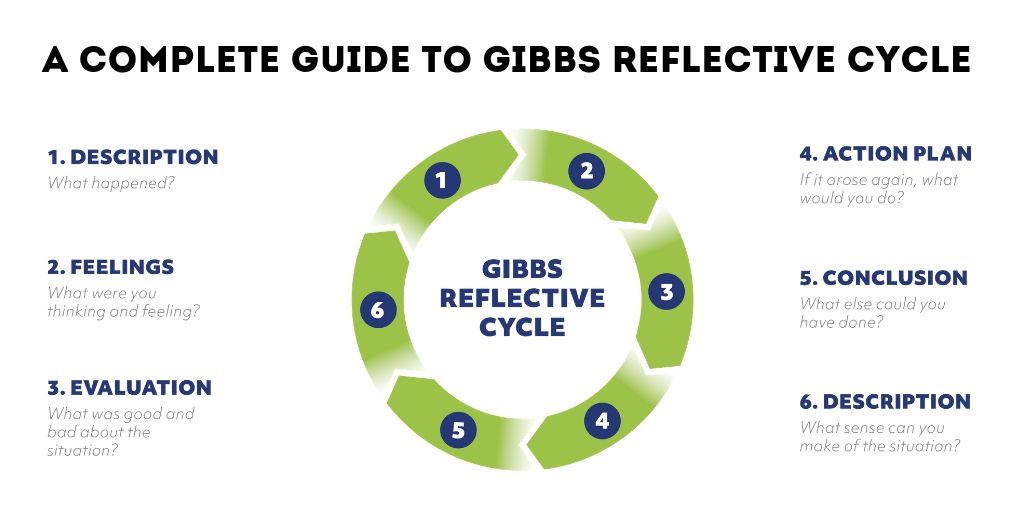
Gibbs Reflective Cycle Nursing Australia A Complete Guide
Figure 4 Gibb's reflective cycle (Adapted from Dye, 2011) Gibb's model acknowledges that your personal feelings influence the situation and how you have begun to reflect on it. It builds on Boud's model by breaking down reflection into evaluation of the events and analysis and there is a clear link between the learning that has happened from the experience and future practice.
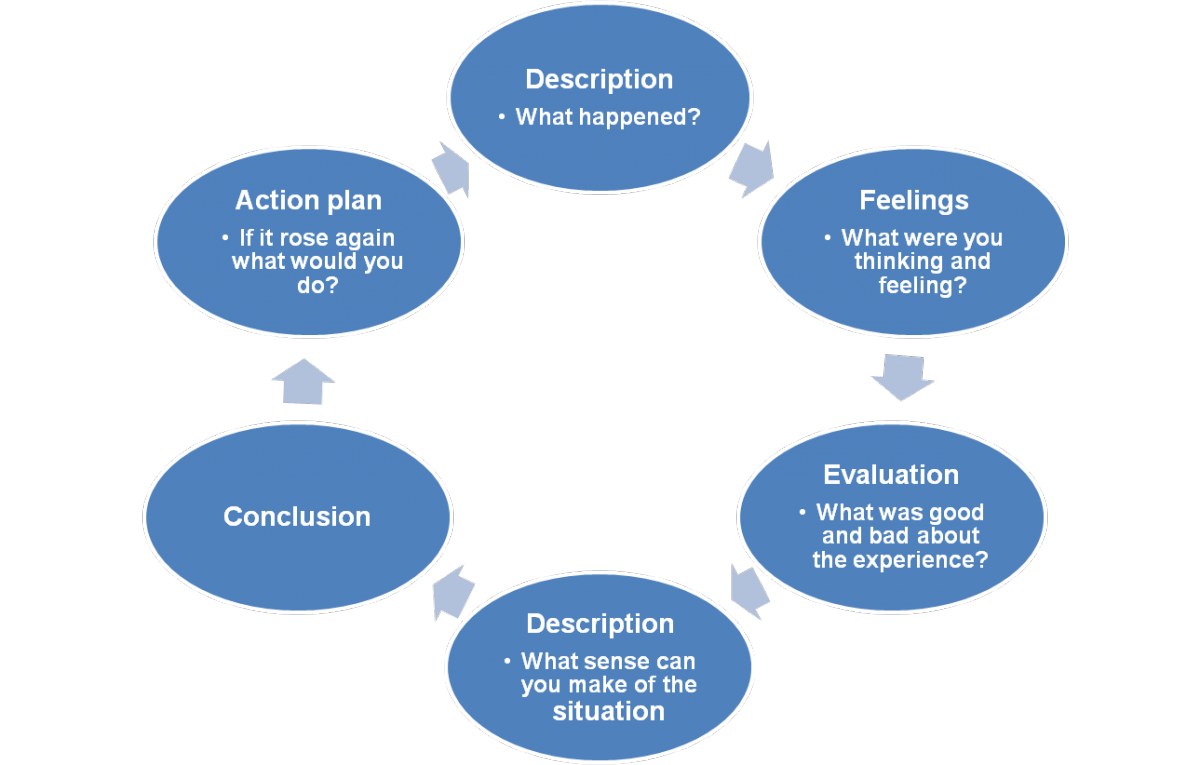
Guide to Writing a Reflective Essay or Report 15 Writers
Gibbs' reflective cycle skills@cumbria June 2020 Gibbs' reflective cycle Gibbs (1988, p.49) created his "structured debriefing" to support experiential learning. It was designed as a continuous cycle of improvement for a repeated experience but can also be used to reflect on a standalone experience.

Reflection Gibbs Model and Applied Example Working Well Solutions
What is Gibbs' Reflective Cycle? Gibbs' Reflective Cycle is a popular model for reflection, acting as a structured method to enable individuals to think systematically about the experiences they had during a specific situation. Gibbs' Reflective Cycle is a widely used and accepted model of reflection.
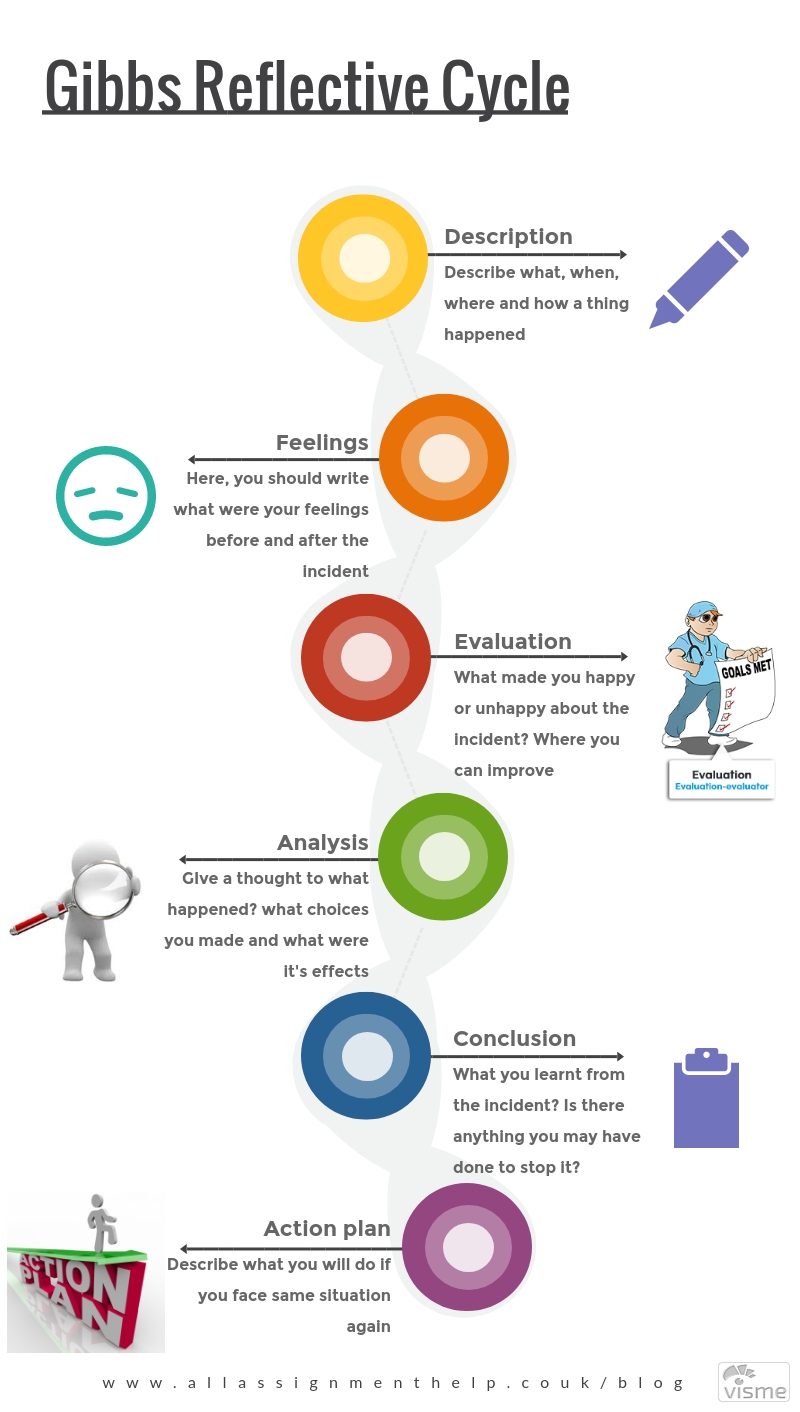
Your Essential Guide to Gibbs Reflective Cycle
The Gibbs Reflective Cycle starts at Description and then continues clockwise to Feelings, Evaluation, Analysis, Conclusion and ends at Action plan, to finally return to Description. Here the Gibbs reflective cycle is complete. Figure 1 - the steps of the Gibbs Reflective Cycle. The various steps are explained in more detail below:

Personal Leadership Course Framework & Model Personal Leadership Coach UK
Gibbs Reflective Cycle - A Practical Guide. Matthew Channell. November 14, 2023. Understanding and leveraging the Gibbs Reflective Cycle is crucial in the quest to become an impactful leader. This powerful tool offers a structured approach to personal and professional growth through reflective practice, enabling leaders to transform.

SOLUTION Gibbs' Reflective Cycle the 6 stages Studypool
Example of Gibbs' reflective cycle FAQs References Hence, the efficacious use of Gibbs' reflective cycle helps individuals to learn from past experiences that went well as well as past experiences that did not. The 6 stages of Gibbs' cycle include description, feelings, evaluation, analysis, conclusion, and action plan (Smith & Roberts, 2015).

Gibbs' Reflective Cycle Source Gibbs (1988) Download Scientific Diagram
An Example Of Gibbs Reflective Cycle Description - Stage One Feelings - Stage Two Evaluation - Stage Three Analysis - Stage Four Conclusions - Stage Five Action Plan - Stage Six References About Graham Gibbs The reputation for excellent teaching at Oxford Brookes University is in large part due to the work done by Professor Graham Gibbs.

Reflection Is it a skill? Leap Like A Salmon
Different depths of reflection - an example of reflecting more briefly using this model This is just one model of reflection. Test it out and see how it works for you. If you find that only a few of the questions are helpful for you, focus on those.
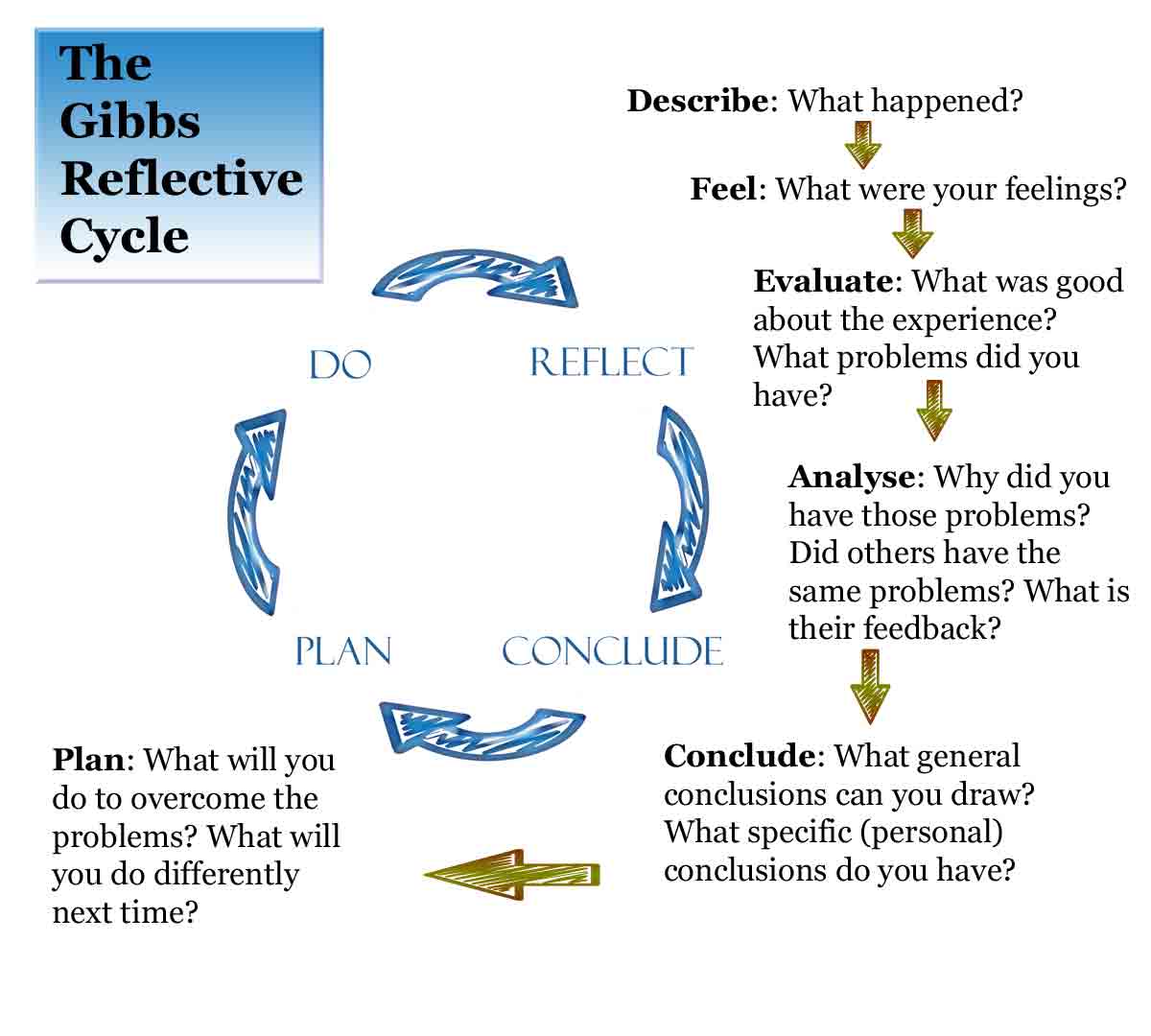
Learning cycle
1. Description The Gibbs Reflective Cycle starts by objectively describing the situation or experience that is to be evaluated and reflected upon. In this stage, you will provide details regarding the context and individuals involved, as well as any relevant background information. 2. Feelings
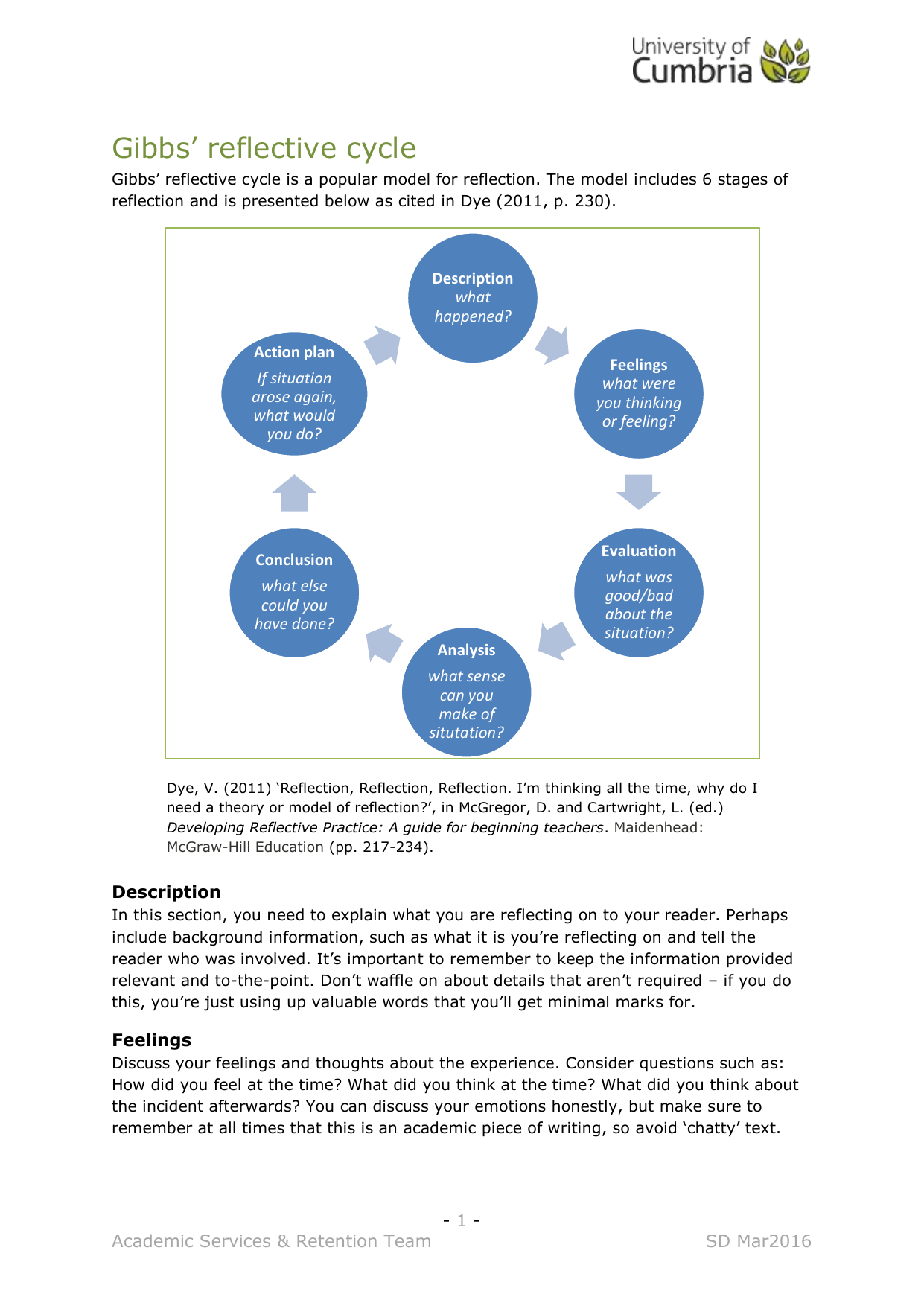
Gibbs Reflective Cycle
Reflection based on Gibbs reflective cycle (Example 1) Gibbs, G. (1988) Learning by doing. A guide to teaching and learning methods. Oxford Polytechnic: Oxford Description - what happened? A patient that I had been looking after for many years with cystic fibrosis finally died on my ward. Feelings - what were you thinking and feeling?
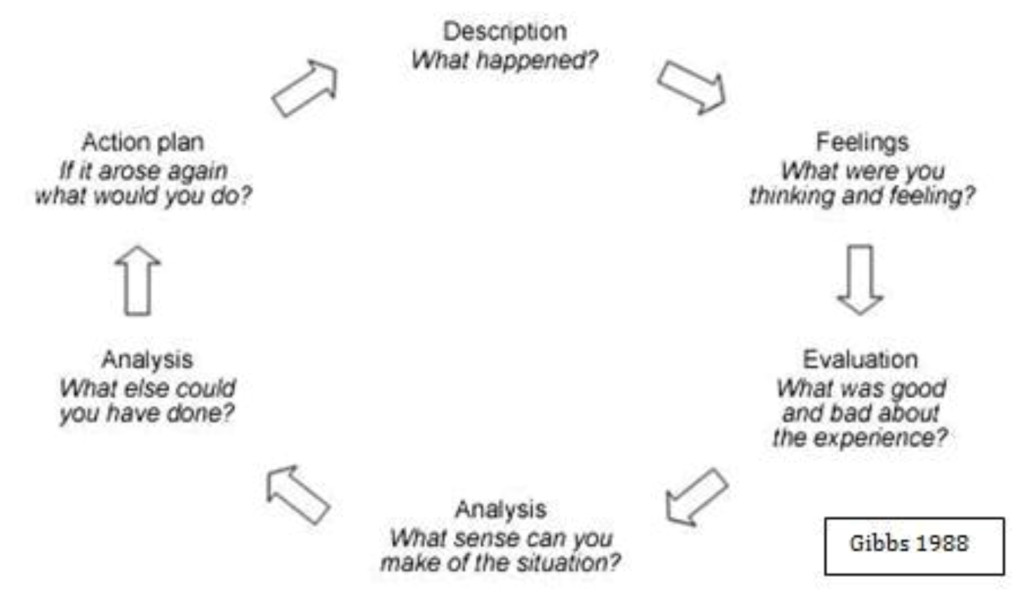
Gibbs Reflective Model Template williamsonga.us
Gibbs' Reflective Cycle Explained EPM 68.9K subscribers Subscribe Subscribed 2.8K Share Save 334K views 4 years ago In this video, we'll explain the theory behind Gibbs' Reflective.
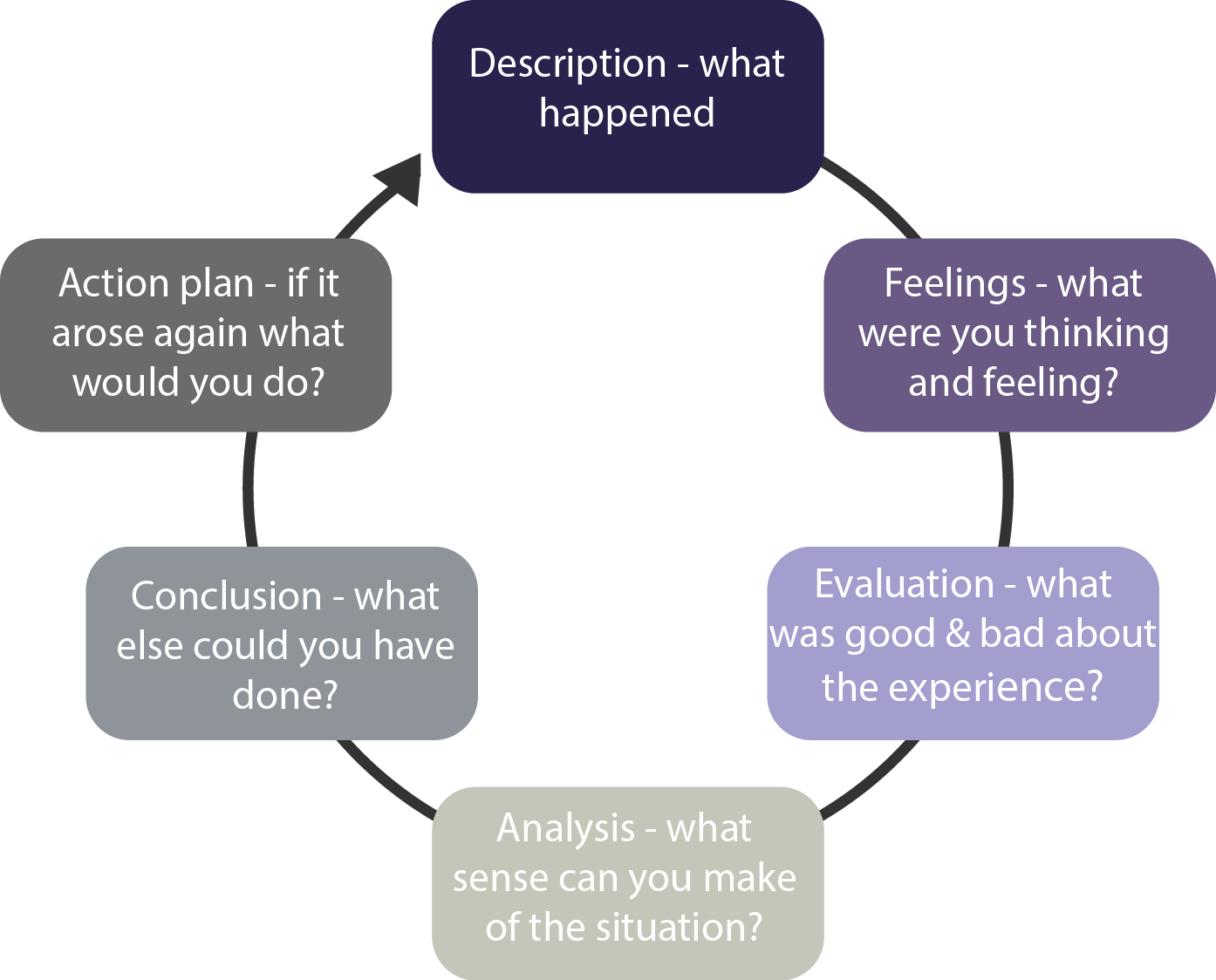
The value of reflective practice for partnership brokers The Partnership Brokers Association
What Is the Gibbs' Reflective Cycle Why Is Gibbs' Cycle of Reflection Important The Six Stages of Gibbs' Model of Reflection Step 1. Description Step 2. Feeling Step 3. Evaluation Step 4. Analysis Step 5. Conclusion Step 6. Plan of Action Gibbs' Reflective Cycle Example Gibbs Reflective Cycle Template
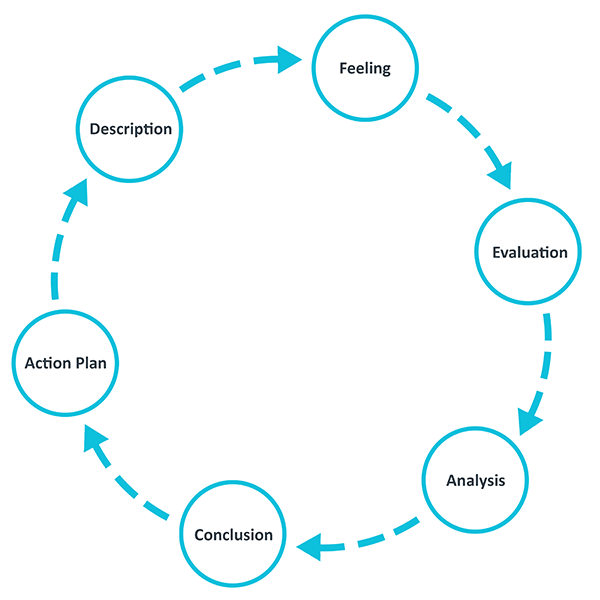
Gibbs' reflective cycle The University of Edinburgh
An example of a study that examined the impact of Gibbs' Reflective Cycle on medical students was documented in Dhaliwal et al. (2018) where they piloted a reflective assignment in which medical students were introduced to Gibbs' Reflective Cycle during a half-day workshop and subsequently submitted reflective narratives based on a doctor-to-patient interaction that they had previously.

Reflective writing Federation University Study Skills
In this video, we explained Gibbs' Reflective Cycle - a structured framework for reflective practice that is widely used in healthcare, education, and social.